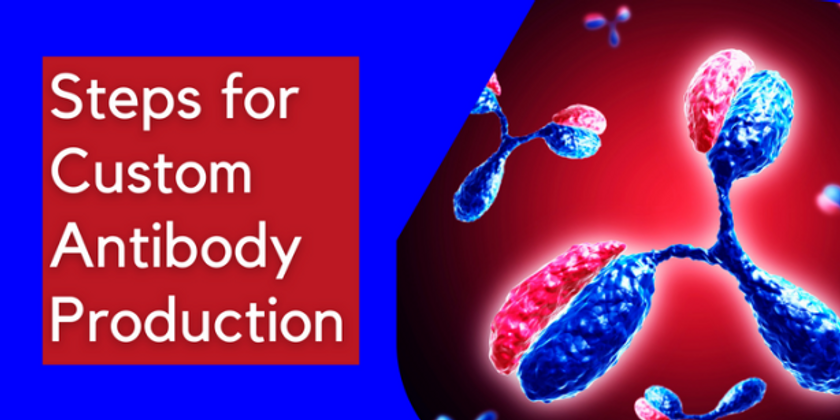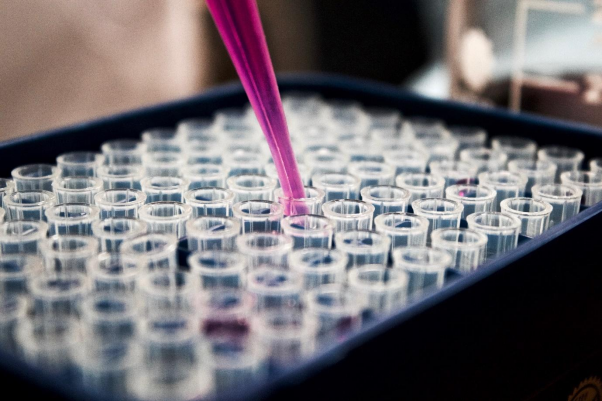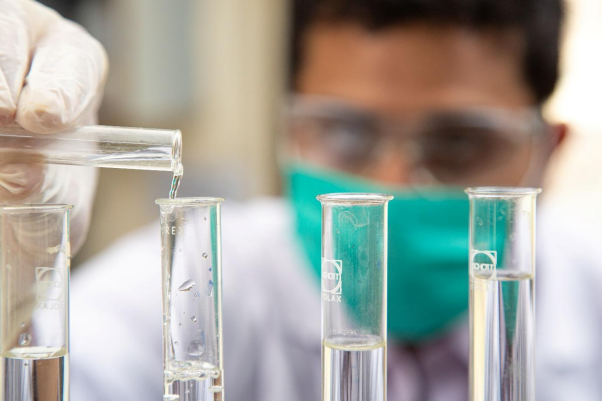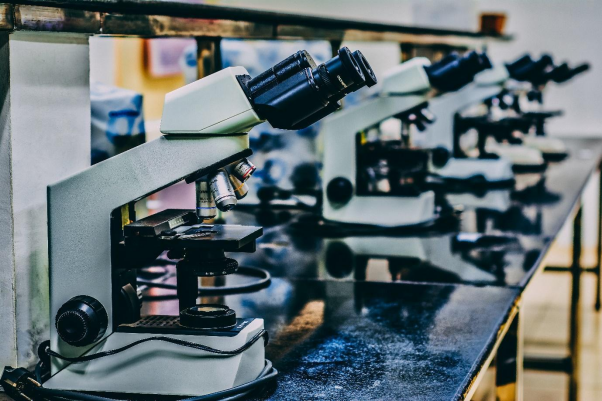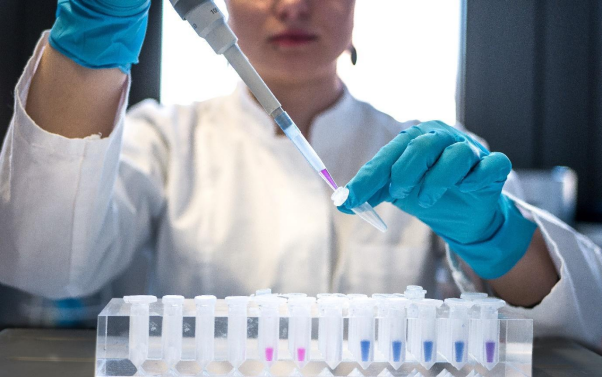Steps for Custom Antibody Production
Jun 10th 2022
The adaptive immune system produces antibodies in response to invading pathogens. The antibody recognizes the offending bacteria, viruses, or other molecules, collectively called antigens. Antibodies are proteins that are folded polypeptides or strands of amino acids with antigen recognition sites, recognizing a specific antigen-binding site. B-cells of the adaptive immune system tend to produce them.
Antibody specificity recognition has many applications in biotechnology. And, when you wish to adhere to such services offered by DNA synthesis companies and peptide synthesis companies, they also offer services like sensor development, antibody production services, custom protein synthesis, and E Coli protein expression. These applications necessitate highly pure antibody sources. Besides, these antibodies are typically conjugated to sensor surfaces or used in conjunction with nanoparticles or other labeled detection platforms to detect antigens.
Significantly, purified antibodies with antigen specificity are commercially available. Monoclonal vs polyclonal antibody production is classified based on how they are generated and harvested. Polyclonal antibody production can recognize multiple epitopes or different locations on an antigen. They are descended from various B cell lineages. However, monoclonal antibodies are derived from a single B-cell line and recognize only one epitope on an antigen.
Custom antibody manufacturing can be used when an antibody against a specific antigen is needed but is not readily available from a supplier. A 90 percent purified sample of antigen is all that is required to generate and harvest a custom antibody against that antigen. If an antigen sample is unavailable, you can synthesize custom peptides or proteins and antibodies developed against them. Custom antibody services protocols can generate both polyclonal and monoclonal antibodies.
Monoclonal Antibodies
Monoclonal antibodies (mAbs) are a type of antibody produced by identical B cell clones in response to a specific antigen. Several features of mAbs are the same, including protein sequence, antigen-binding site area, target binding affinity, and downstream functional effects. These properties distinguish mAbs from polyclonal antibodies, which have a wide range of activity and recognize several epitopes on an antigen.
Murine mAbs were the first generation of mAbs created via hybridoma technology. However, their murine origin might provoke an anti-mouse antibody response in the host, potentially speeding up mAb clearance and causing unwanted allergic reactions if given repeatedly. This problem was remedied by establishing engineering approaches for creating chimeric or humanized antibodies that were less immunologic.
Applications of monoclonal antibodies (mAbs) have become an innovative technique for targeting antigens in a range of disorders, including autoimmunity, cancer, and asthma. mAbs are also useful biological reagents in immunodiagnostic assays because of their excellent specificity and affinity binding capabilities.
They can be employed in diagnosing infectious diseases, detecting specific antigens, and in serological tests to identify antibodies to a particular antigen. The general features of mAbs, their production techniques, and their critical diagnostic and therapeutic uses are summarized in this chapter.
Polyclonal Antibodies
How to make polyclonal antibodies? Polyclonal ATG is made by injecting human thymocytes into animals like horses or rabbits and extracting the purified -globulin fractions from the resultant immunological serum. Many formulations have been created and marketed by various businesses, but rabbit anti-thymocyte globulin is the most often utilized in clinical practice (rATG-Thymoglobulin, Genzyme).
rATG-Fresenius, in which rabbits are inoculated with Jurkat T-cell leukemia lines instead of human thymocytes, and equine ATG (ATGAM, Pfizer), resulting from horses being immunized with human thymocytes, are two other extant preparations. Polyclonal antibody response can arise following ATG injection since polyclonal antibodies are derived from animals, resulting in diminished activity and serum sickness upon re-exposure.
ATG binds to various epitopes on thymocytes, including immune response antigens and adhesion/cell trafficking components, explaining its many methods of action. ATG can bind to B cells, DCs, and nonlymphoid cell lines like monocytes, neutrophils, platelets, and red blood cells, but its primary action method is T-cell depletion. Although additional mechanisms, such as ADCC and activation of death through Fas/Fas ligand interactions, have been identified, ATG causes lymphocyte depletion in the peripheral circulation primarily through complement-dependent cell lysis.
T-cell apoptosis contributes to lymphocyte depletion in the spleen and axillary lymph nodes. Although the T-cell count returns to baseline after a single dosage of ATG after 10 days, roughly 40% of patients who receive a full course of ATG recover more than 50% of their initial lymphocyte count after three months.
Antibody purification
When antibodies are generated against peptides, most researchers use antigen-specific antibody purification. This method allows for the maximum isolation and enrichment of only the most specific antibodies produced in response to the antigen while removing unwanted pre-immune antibodies. Many applications, including IHC and IF, benefit from using antibodies at higher concentrations (lower dilutions) without increasing the signal background.
After selecting antiserum for purification, it is pooled, and the IgG fraction of the antibody is isolated using ammonium sulfate precipitation. This removes sticky proteins from the antiserum and allows for a cleaner material preparation for the affinity column. Affinity resins are made by crosslinking antigens (primarily peptides) with the appropriate amines, acids, or sulfhydryls based on the carrier conjugation chemistry used to create the immunogen.
After incubating antiserum in the column, antibodies are eluted using a pH gradient and collected in a neutralizing buffer. Purified antibodies are then concentrated, and the final concentration is determined using A280. Antibodies are titrated using ELISA. Eluent and flow-through titers are both reported.
Affinity Chromatography in a Purification Strategy
A reversible interaction between a protein (or group of proteins) and a specific ligand coupled to a chromatography matrix is used to separate proteins in AC. Purification levels in the order of several thousand-fold with high recovery of active material are achievable with such high selectivity and thus high resolution for the protein(s) of interest. During binding, samples are concentrated, and the target protein(s) are collected in a purified, concentrated form. As a result, AC can offer significant time savings over less selective multi-step procedures.
In many cases, the high purity attained in AC requires only a second step on an SEC column to remove unwanted small molecules like salts or aggregates.
For even higher purity, or when there is no suitable ligand for affinity purification, an efficient multi-step process based on capture, intermediate purification, and polishing can be developed (CIPP)
CIPP is used in the pharmaceutical industry and research laboratories to ensure faster method development, shorter time to pure product, and effective custom antibody cost. AC can be used as an effective capture or intermediate step in a CIPP strategy when combined with other chromatography techniques.
N-terminal GST
Steps of protein purification with known and unknown biochemical properties are possible using affinity tags such as glutathione S-transferase (GST), histidine (HIS), and others. As a result, this methodology has become a popular research tool for determining the biological function of unknown proteins. GST is a 211 amino acid protein (26 kDa) with a DNA sequence frequently integrated into expression vectors for recombinant protein production. The GST-tagged fusion protein produced by this vector is a functional GST protein (26 kDa) fused to the N-terminus of the recombinant protein.
Because GST folds rapidly into a stable and highly soluble protein upon translation, including the GST tag often promotes higher recombinant protein expression and solubility than expression without the tag. Furthermore, GST-tagged fusion proteins can be purified or detected based on GST's (an enzyme) ability to bind its substrate, glutathione (GSH).
Physicochemical fractionation antibody purification
The major classes of serum immunoglobulins (e.g., IgG, IgM) share a standard general structure, including overall amino acid composition and solubility properties. These available properties distinguish immunoglobulins from other abundant proteins in serum, such as albumin and transferrin, and allow them to be selected and enriched based on these specific physicochemical properties.
Size exclusion chromatography
Dialysis, desalting, and diafiltration can all be used to exchange antibodies into specific buffers while removing unwanted low-molecular-weight (MW) components. To separate immunoglobulins (>140 kDa) from small proteins and peptides, dialysis membranes, size-exclusion resins, and diafiltration devices with high molecular weight cut-offs (MWCO) can be used. Unless combined with specialized columns and equipment, these techniques cannot separate antibodies from other proteins and macromolecules found in typical antibody samples. Gel filtration and dialysis are commonly used after other purification steps, such as ammonium sulfate precipitation.
Antibody Characterization
Antibody class, binding kinetics, epitope specificity, cross-reactivity, and antibody sensitivity can all be determined by antibody characterization.
Antibody class and subclass are determined using subclass-specific antisera in various ways, including radioimmunoassay, ELISA, and immunological precipitation. Antibody isotyping kits are commercially available for this purpose. The antibody class does not prove that the antibody is monoclonal in the case of monoclonal antibodies. It is assumed that the antibody exhibits monoclonality if created from a hybridoma that underwent a rigorous and technically satisfactory cloning method. The antibody shows signs of monoclonal specificity as assessed by a predetermined categorization.
Cross-reactivity investigations with the antigen and other structurally related antigens employing ELISA, RIA, BIAcore, Western, and dot blotting are used to determine antibody specificity.
ELISA test kits or biosensors can be used to test an antibody's affinity for a specific antigen. BIAcore is a label-free, real-time SPR-based biosensor that may be used to explore biomolecular interactions. BIAcore can be used to investigate the antibody-antigen interaction, providing helpful information on the kinetics of association and dissociation.
Antibody fragmentation
Antibody fragments are a compact and simple structure that has gained popularity recently due to the numerous advantages they offer over the use of complete antibodies. Antigen-binding fragments (Fab) and single-chain variable fragments (scFV) are two types of antibody fragments that have been studied, as well as a third-generation (3G) molecule. The Fab fragments have one constant and variable heavy and light chain domain. Still, the scFV fragments have varied areas of heavy and light chains fused, the continuous heavy and light chain from the previous state is not present, and the third type has only one variable heavy chain.
As previously stated, entire antibodies are far more effective in treating hematological malignancies than solid tumors, owing to antibody sizes (150 kDa) that are too large to penetrate solid tumors. Smaller antibody fragments (approximately 50 kDa for Fab and 25 kDa for scFV) can be used to overcome antibodies' lack of impact on solid tumors [20]. Due to the absence of the FC section, antibody fragments do not compete with endogenous immunoglobulins or attach to FC receptors on healthy cells. Other benefits of the FC portion are minimizing the immunogenicity potential of antibody fragment-based therapies.
Another advantage of using antibody fragments rather than entire antibodies is that antigen detection is more sensitive. Given the benefits of using antibody fragments rather than the whole antibodies indicated above, researchers have paid attention to the usage of antibody fragments in recent years.
Antibody immobilization and labeling
Suppose you consider how validated antibodies are produced and purified for use as antigen probes. In that case, you'll notice that their use in any technique (western blotting, ELISA, immunohistochemistry, cellular imaging) is dependent on the presence of an antibody detection mechanism. Operating antibodies for immunoprecipitation or affinity purification rely on specific antibody production mechanisms for binding and immobilizing beaded agarose resin. Similar considerations and chemical techniques are used to achieve this result, as in antibody labeling.
Biochemical characterization
When it comes to biochemical properties, they should be thoroughly specified. As the tests develop, they should be classified at the very least by an investigator. You should also describe the antibodies' immunological properties, such as antigenic specificity, antibody epitope, activation and complement ability, binding capacity, antibody-dependent cytotoxicity, cytotoxic properties, antigen relevance, and the ability to accommodate immunocompetent cells in detail.
Single harvest production
The maximum allowable generation amount for production is defined based on cell line stability and production levels. Where, on the other hand, are antibodies produced? In this context, multiple harvest production includes recurring cultivation, which a scholar can specify to stabilize the system beyond a limit.
Since biochemicals and biosciences have evolved significantly over the decades, investigators and researchers have discovered new mediums to support their experiments. However, when it comes to custom antibody production, several companies provide protein expression and purification services, commercial peptide synthesis, custom gene synthesis, and protein production services while determining the minor details.
Bottomline
Antibodies are created and purified to be used as antigen-specific probes. However, their utility in any given technique (ELISA, western blotting, cellular imaging, immunohistochemistry) is dependent on the presence of a mechanism to detect the antibody secondarily.
Antibody immunoprecipitation or affinity purification techniques rely on mechanisms for attaching or immobilizing antibodies to chromatography media. The same considerations and chemical methods used in antibody labeling are used in this strategy.

